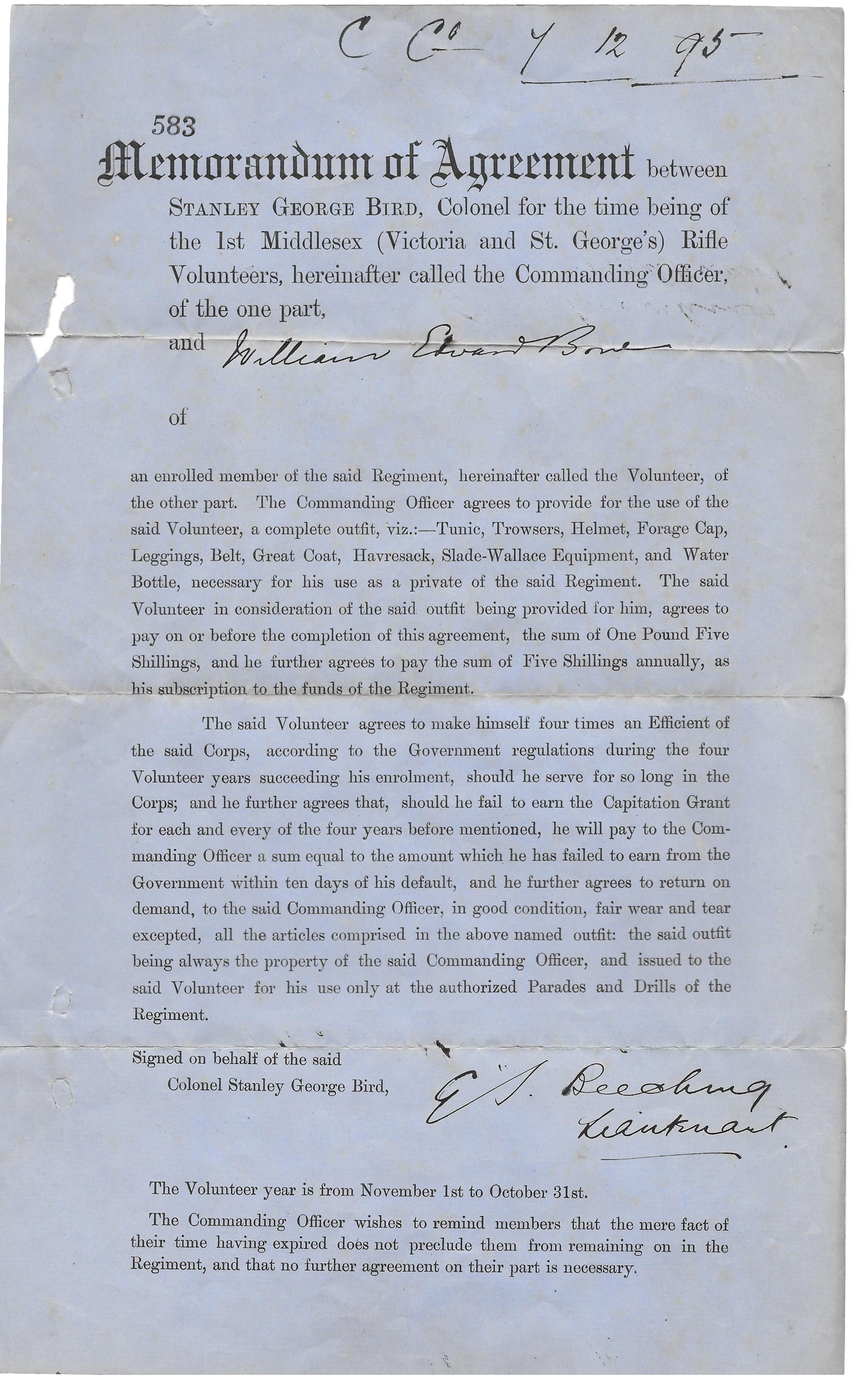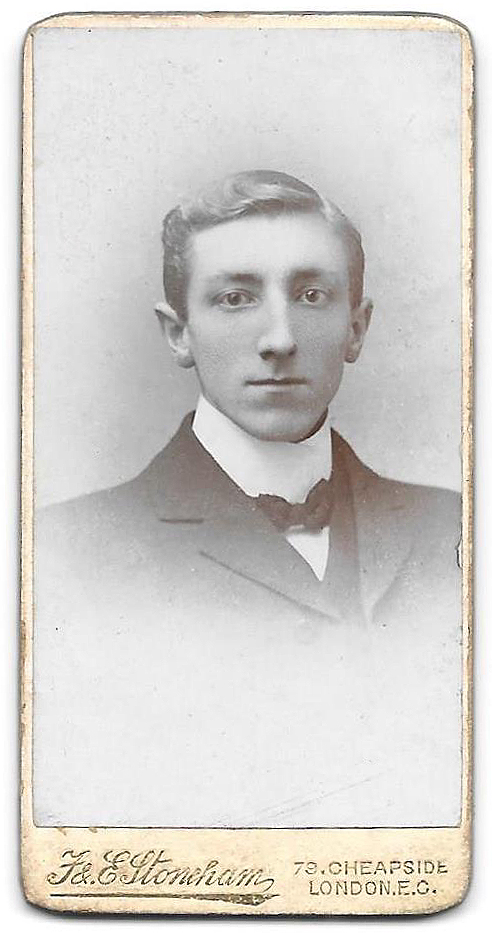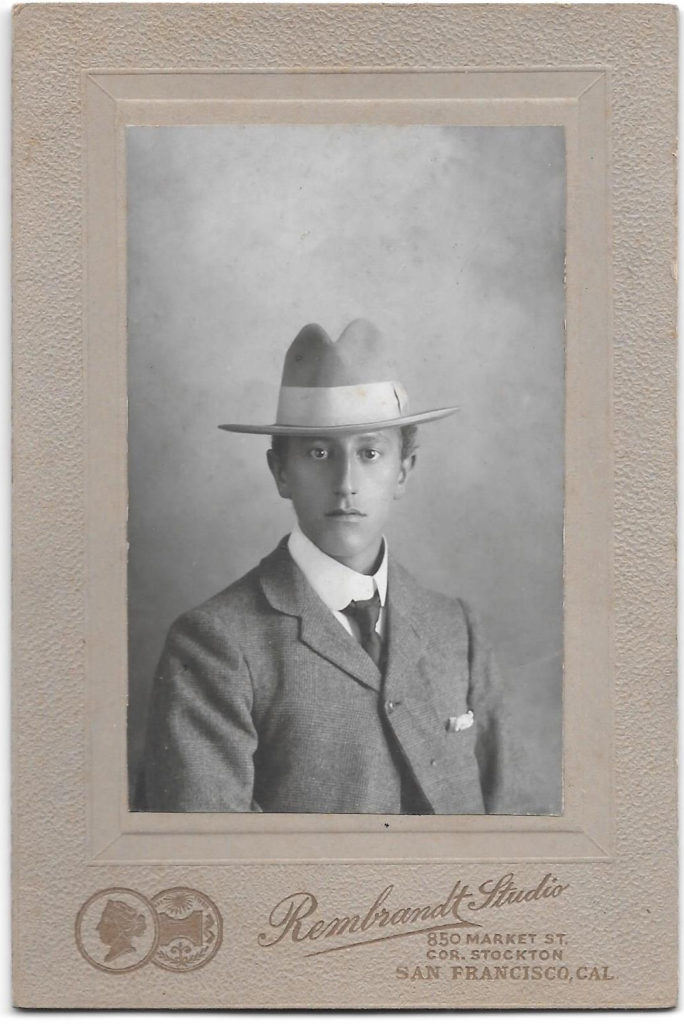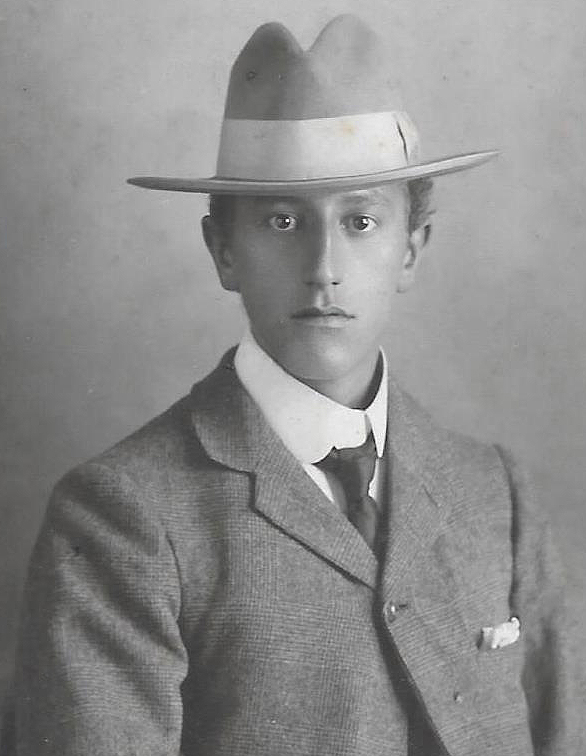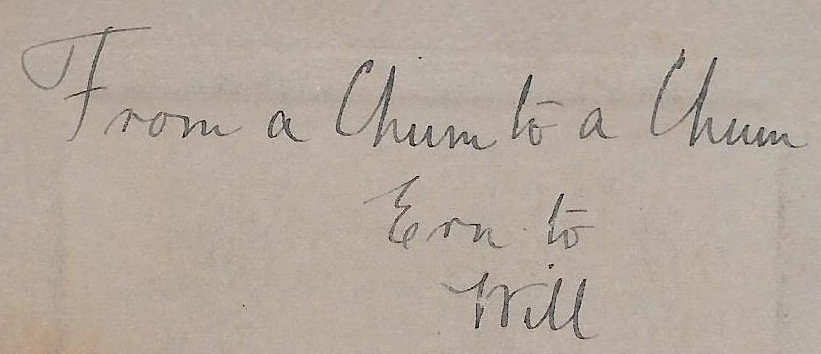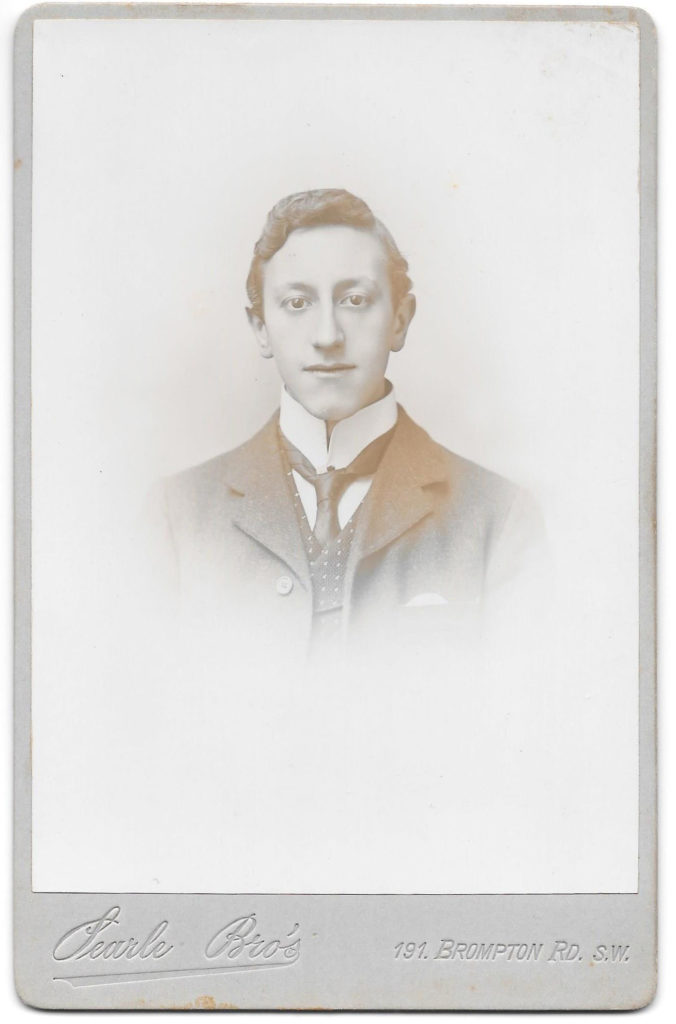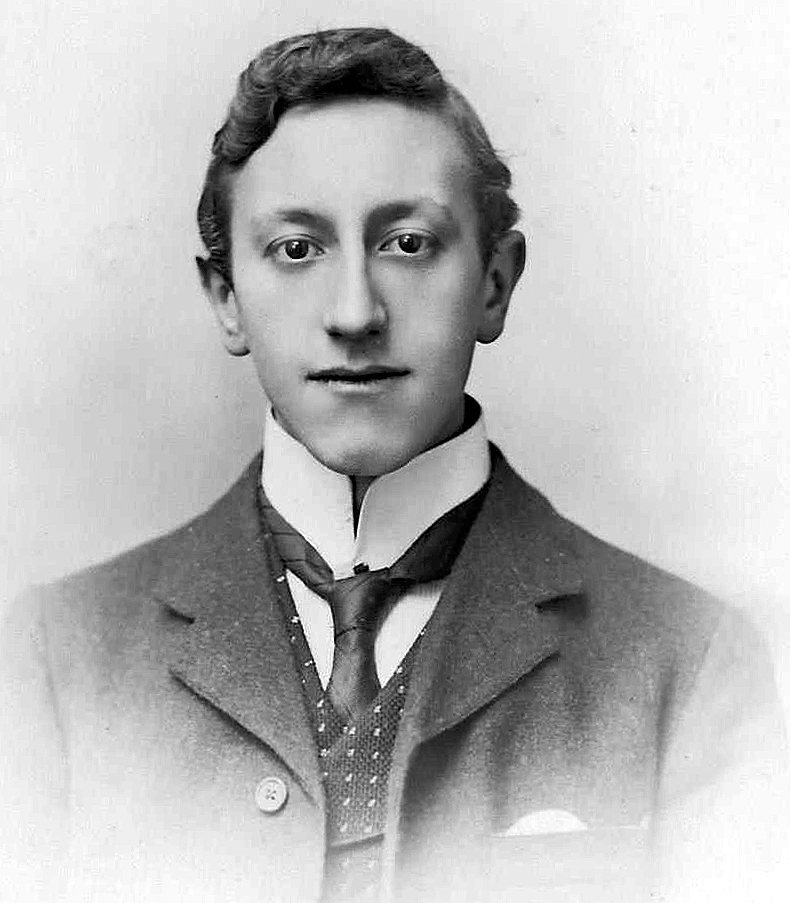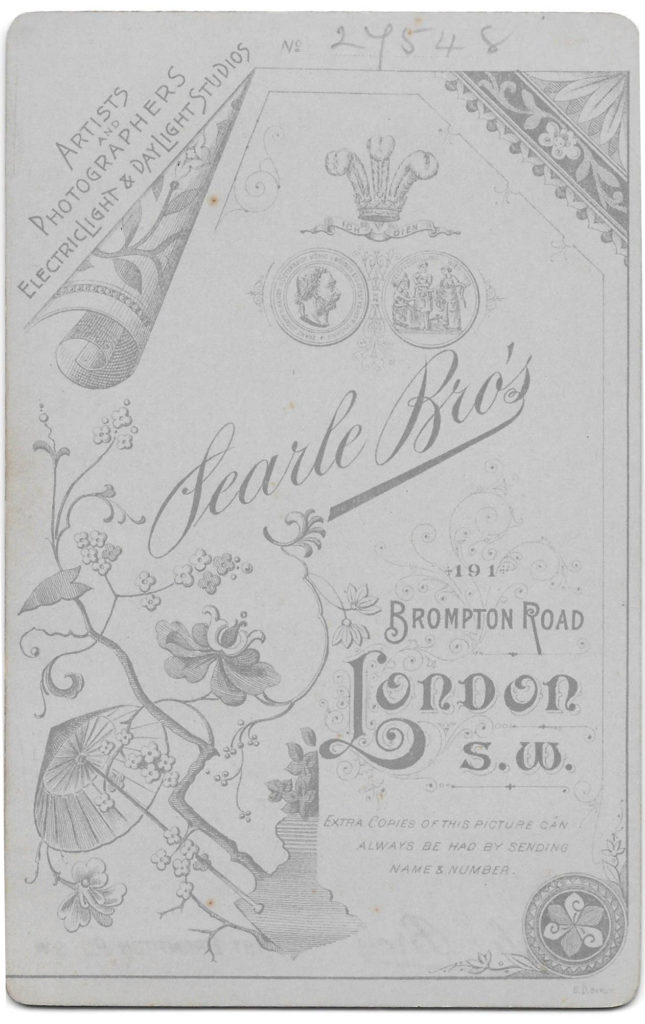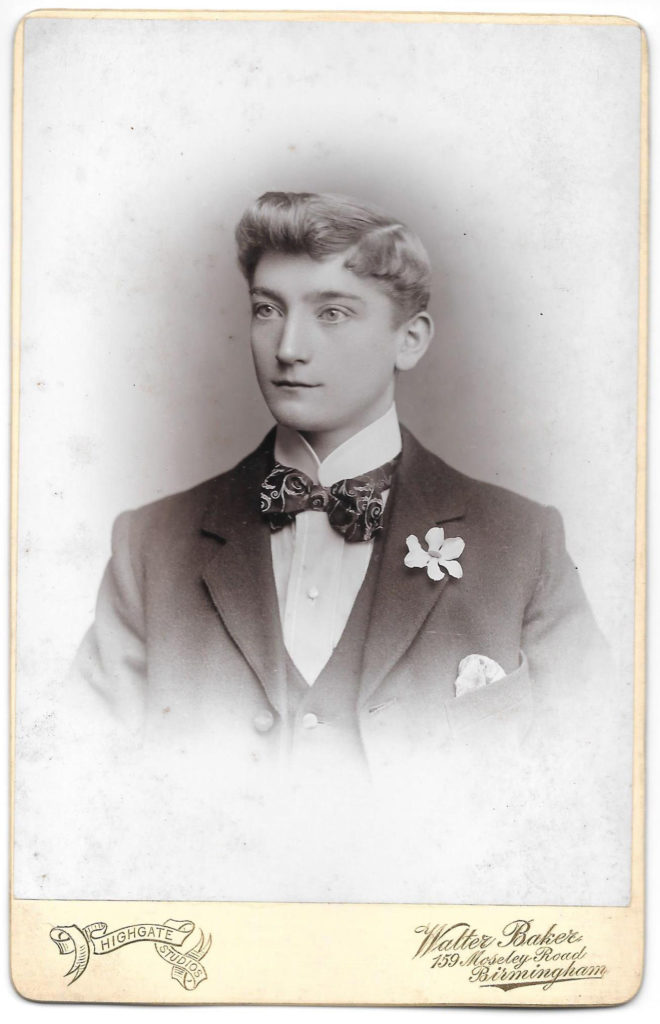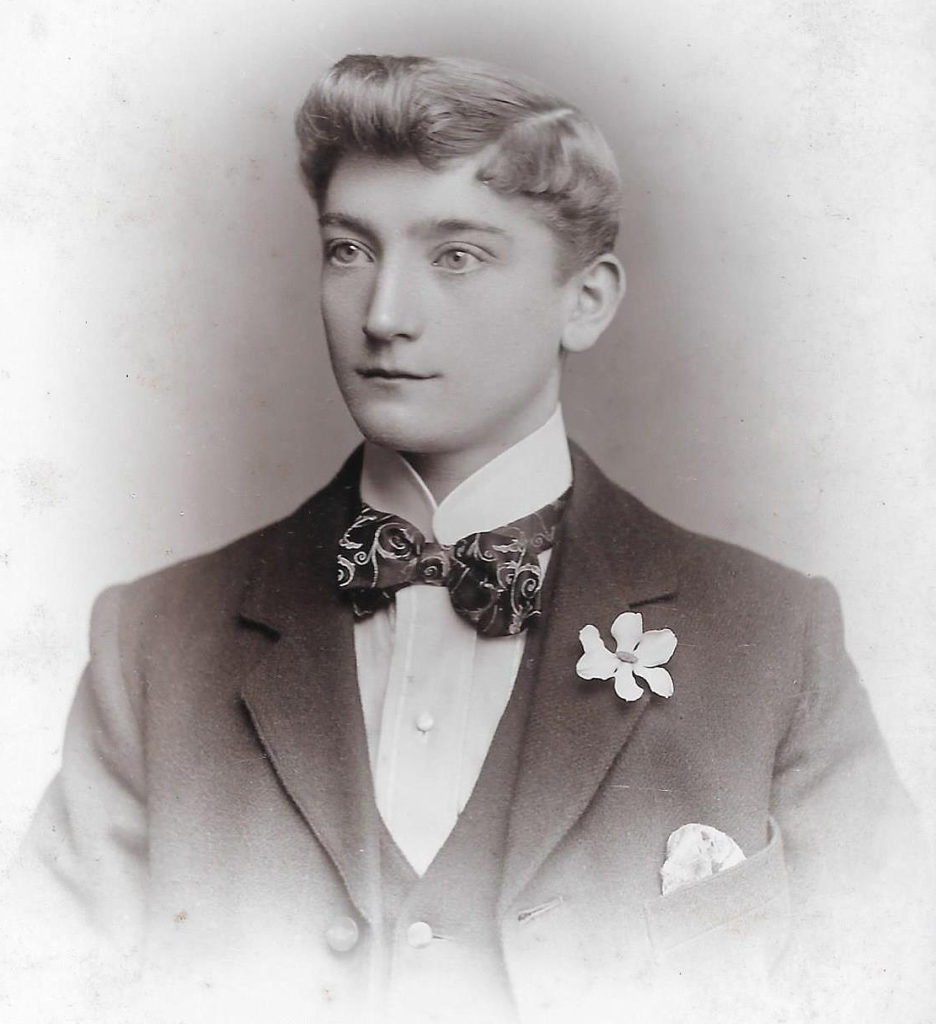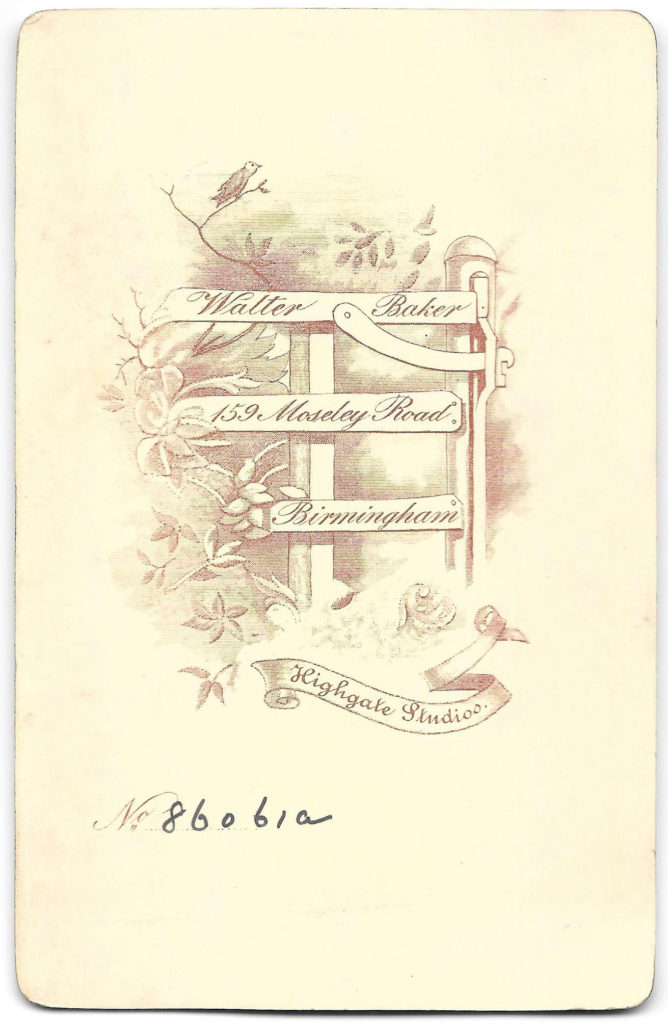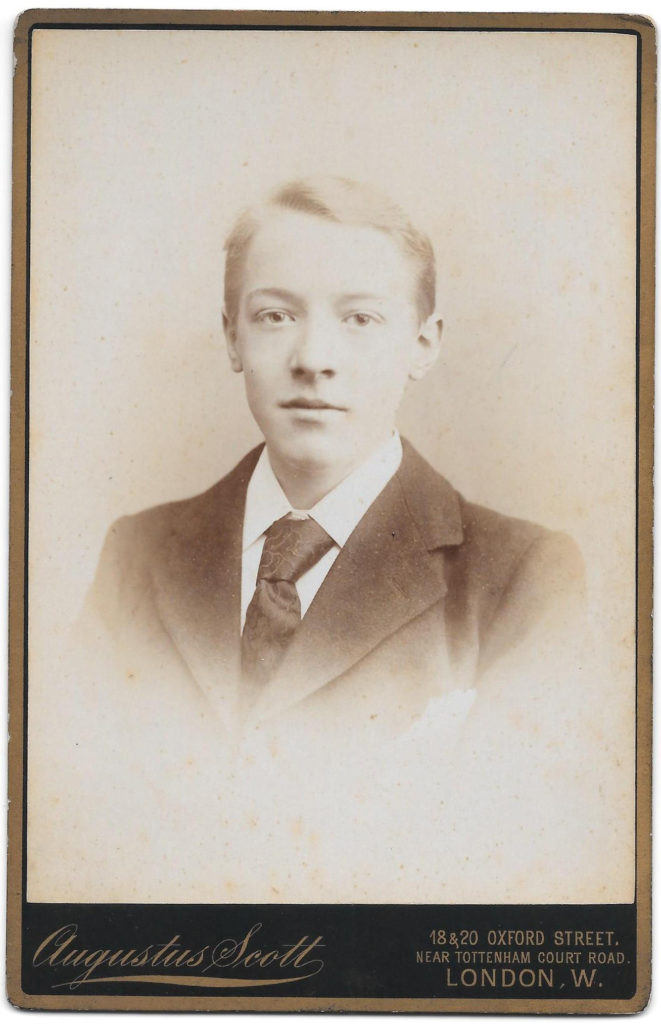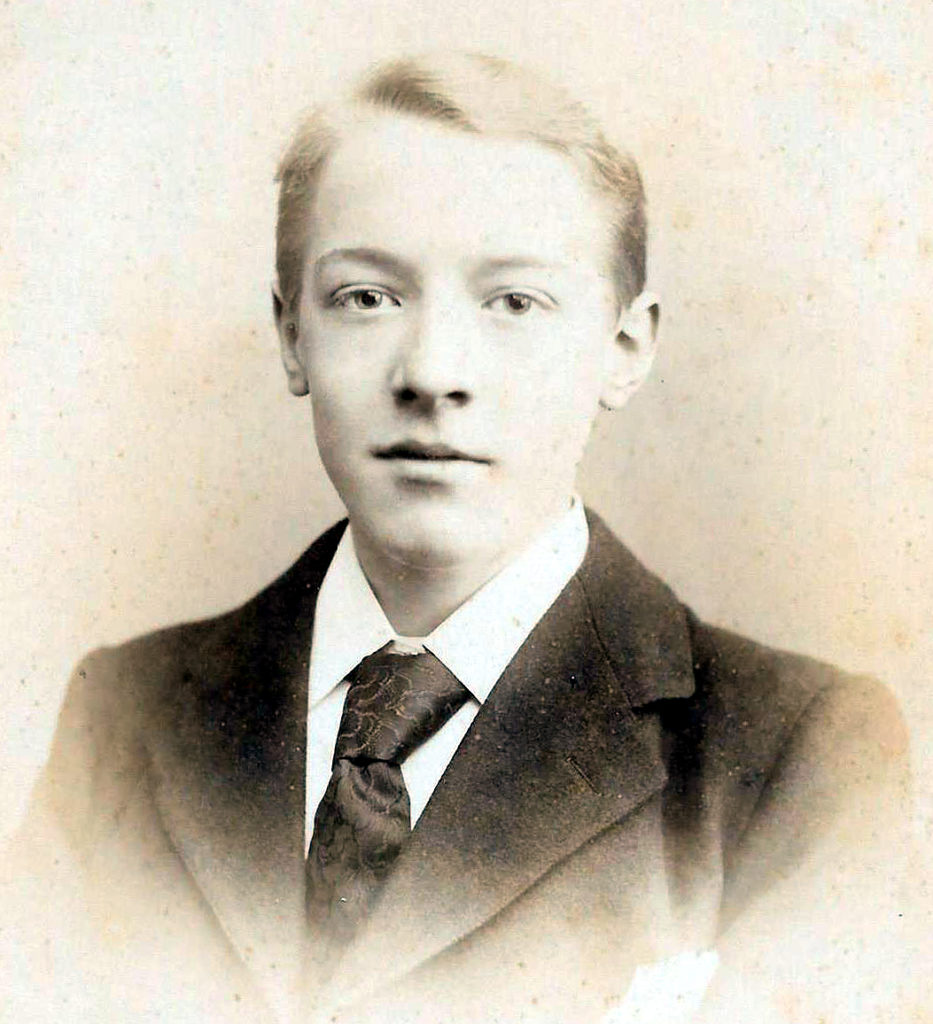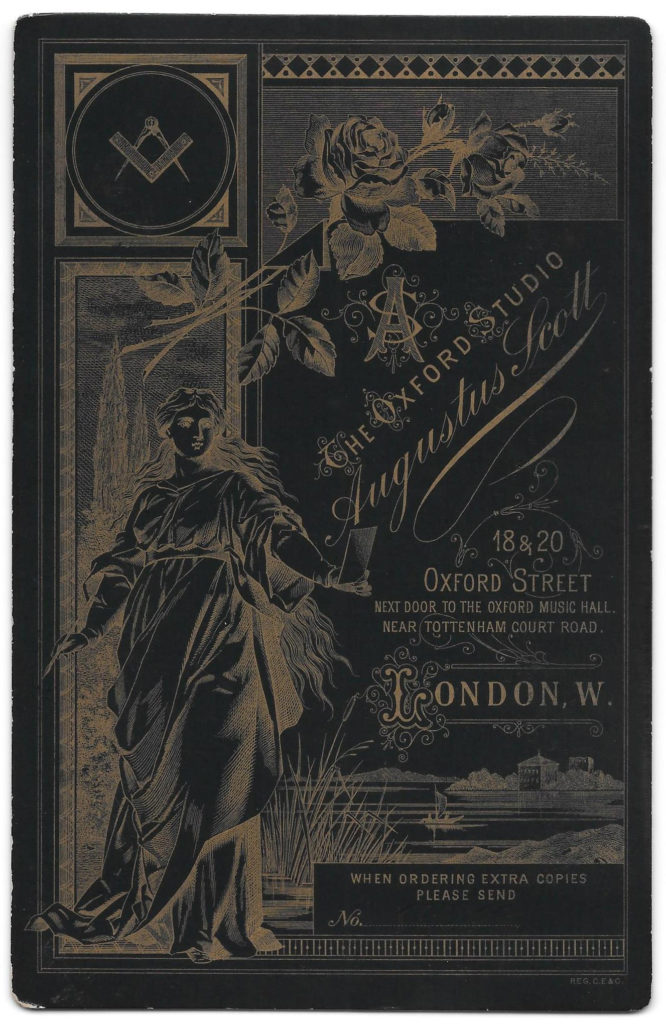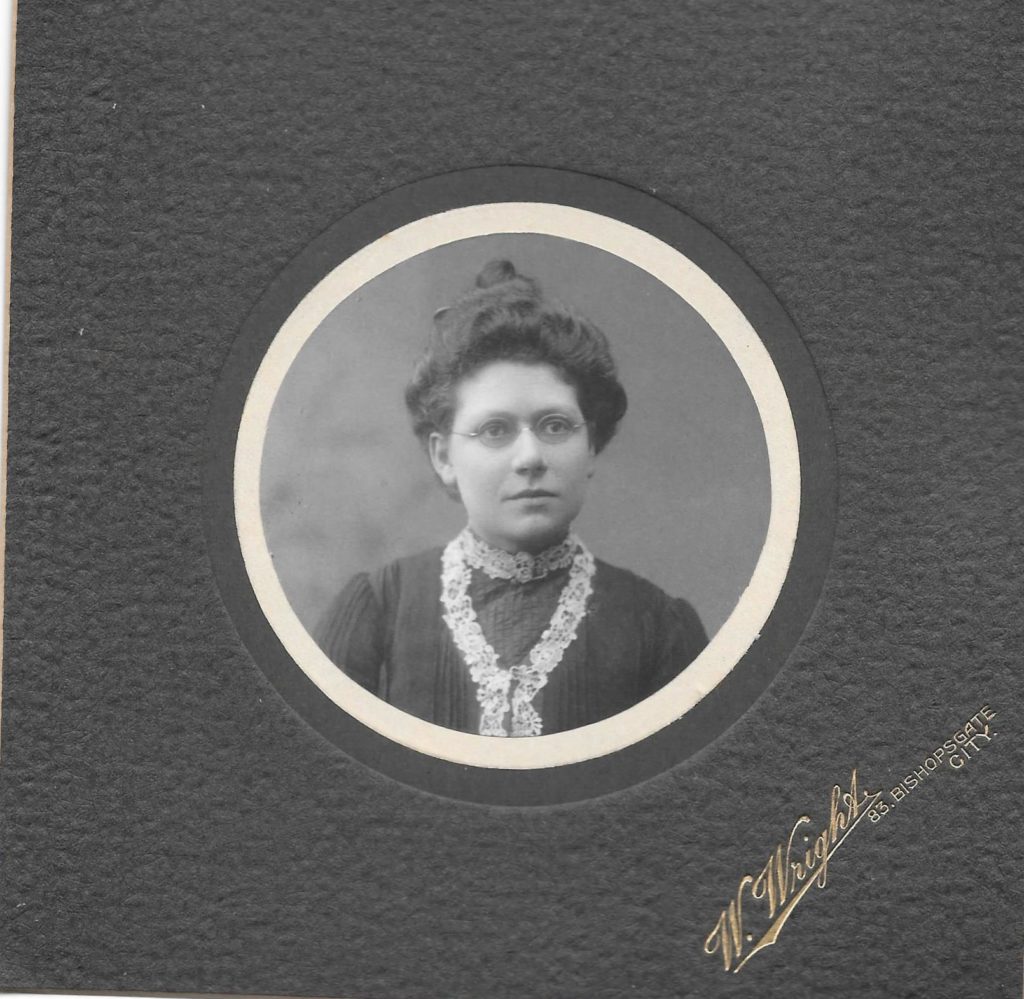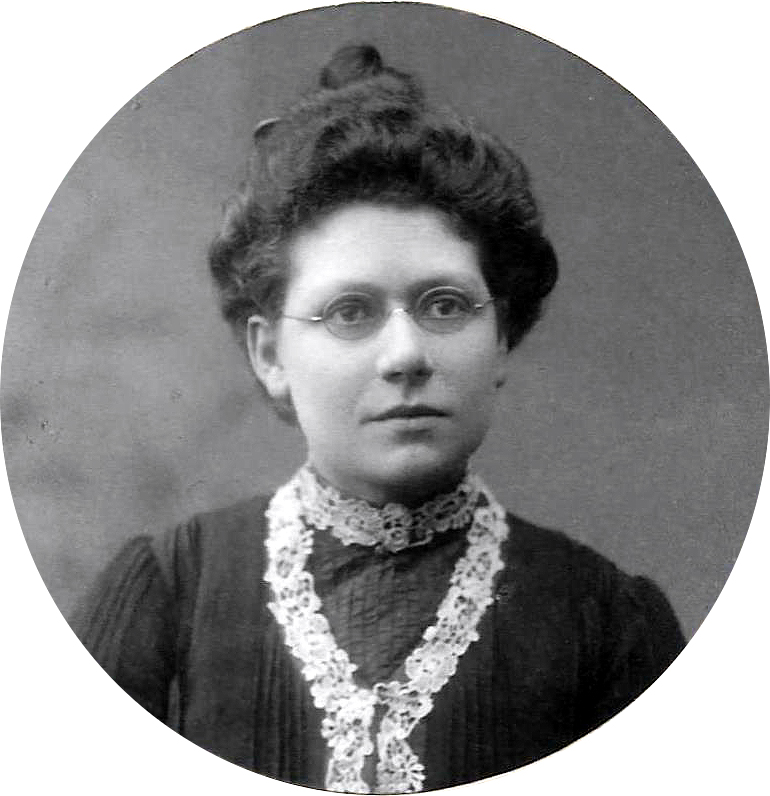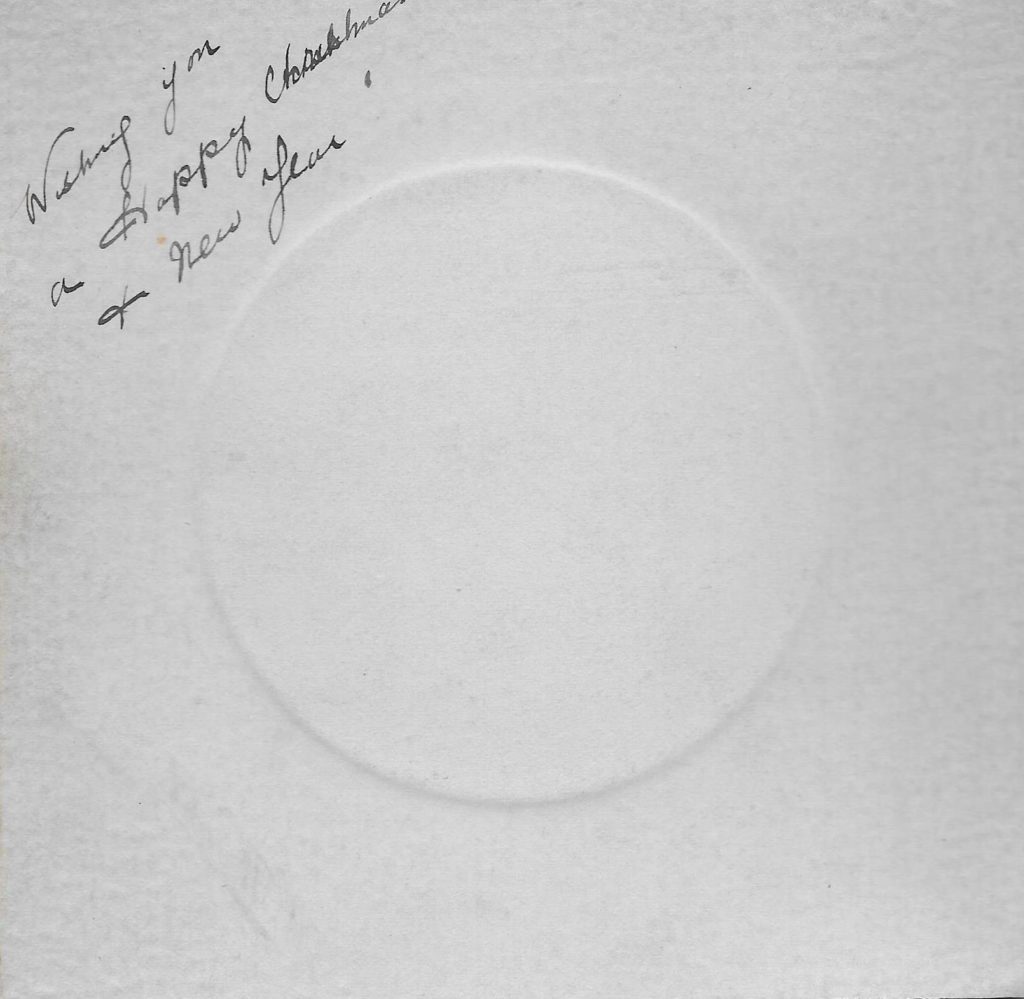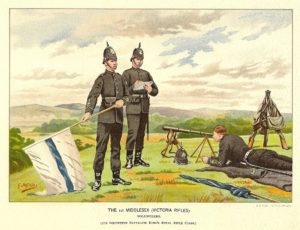
William Edward Bone (1876–1964).
On the 7th of December 1895, William Edward Bone formally applied to join the First Middlesex (Victoria and St. George’s) Rifle Volunteers (more here), and on that occasion he signed a detailed Memorandum of Agreement outlining the terms of his volunteer service. This marked his official entry into the highly regarded citizen-soldier movement of the late Victorian period.
I was fortunate to obtain this fragile original document, along with a small but evocative collection of his personal photographs—each one offering a glimpse into the world he inhabited.
From what I can gather—though I remain cautious in case this is a different individual—William appears to have spent the majority of his life in the Croydon and Lewisham area. By the time of the 1939 Register, he was most likely working as a railway clerk, a stable and respectable civilian occupation during that era.
If my research is correct, William married his wife, Daisy Catherine Smith (1880–1971), in 1915, during the First World War. Together they had a daughter named Dorothy, born in 1917, whose early years would have been shaped by wartime Britain and its aftermath.
Below, you’ll find both the original Memorandum of Agreement and the photograph collection that accompanies this modest but revealing piece of personal history.
583
Memorandum of Agreement between
Stanley George Bird, Colonel for the time being of the 1st Middlesex (Victoria and St. George’s) Rifle Volunteers, hereinafter called the Commanding Officer,
of the one part, and William Edward Bone of an enrolled member of the said Regiment, hereinafter called the Volunteer, of the other part. The Commanding Officer agrees to provide for the use of the said Volunteer, a complete outfit, viz.:—Tunic, Trowsers, Helmet, Forage Cap, Leggings, Belt, Great Coat, Haversack, Slade-Wallace Equipment, and Water Bottle, necessary for his use as a private of the said Regiment. The said Volunteer in consideration of the said outfit being provided for him, agrees to pay on or before the completion of this agreement, the sum of One Pound Five Shillings, and he further agrees to pay the sum of Five Shillings annually, as his subscription to the funds of the Regiment.
The said Volunteer agrees to make himself four times an Efficient of the said Corps, according to the Government regulations during the four Volunteer years succeeding his enrolment, should he serve for so long in the Corps; and he further agrees that, should he fail to earn the Capitation Grant for each and every of the four years before mentioned, he will pay to the Commanding Officer a sum equal to the amount which he has failed to earn from the Government within ten days of his default, and he further agrees to return on demand, to the said Commanding Officer, in good condition, fair wear and tear excepted, all the articles comprised in the above named outfit: the said outfit being always the property of the said Commanding Officer, and issued to the said Volunteer for his use only at the authorized Parades and Drills of the Regiment.
Signed on behalf of the said
Colonel Stanley George Bird,
[Signature]
E. J. Beeching
Lieutenant
The Volunteer year is from November 1st to October 31st.
The Commanding Officer wishes to remind members that the mere fact of their time having expired does not preclude them from remaining on in the Regiment, and that no further agreement on their part is necessary.
Explanation of the Document
The document is a “Memorandum of Agreement” dated 12 July 1895, between:
-
Colonel Stanley George Bird, acting Commanding Officer of the 1st Middlesex (Victoria and St. George’s) Rifle Volunteers, and
-
William Edward Bone, an enrolled volunteer in the regiment.
This agreement outlines the terms under which Bone will serve in the regiment and receive his military equipment.
Key Points:
-
Provision of Uniform and Equipment
The Commanding Officer agrees to issue a full set of uniform and necessary gear, including:-
Tunic, trousers, helmet, forage cap, leggings, belt, great coat, haversack, Slade-Wallace equipment, and water bottle.
-
-
Financial Obligations of the Volunteer
-
Bone must pay £1 and 5 shillings upon signing the agreement.
-
He must also pay an annual subscription of 5 shillings to the Regiment’s fund.
-
-
Training and Service Commitments
-
The volunteer must qualify as “Efficient” at least four times in the following four years, according to government standards.
-
If he fails to qualify, he must reimburse the value of any unearned government capitation grants (money the government pays to the regiment for each efficient volunteer).
-
-
Return of Equipment
-
The equipment remains the property of the regiment and must be returned in good condition (allowing for fair wear and tear) if the volunteer defaults or leaves.
-
-
No Renewal Needed
-
Volunteers who continue beyond their initial period do not need to sign a new agreement annually.
-
Research: 1st Middlesex (Victoria and St. George’s) Rifle Volunteers
Overview:
The 1st Middlesex Rifle Volunteers were a part of the Volunteer Force, a British Army auxiliary established in 1859 to bolster home defence during a time of concern over French military threats.
The full name – 1st Middlesex (Victoria and St. George’s) Rifle Volunteers – reflects its geographic and patronal affiliations:
-
Middlesex refers to the historic English county (now largely part of London).
-
Victoria and St. George’s were names of prominent volunteer corps or drill halls in the area. These names were often added to differentiate between battalions in the same county.
Historical Context:
-
The Volunteer Force was composed of civilian part-time soldiers, typically unpaid except for specific duties or efficiency grants.
-
Volunteers often trained at drill halls in evenings or weekends and could be called upon in times of national emergency.
-
In 1908, the Volunteer Force was merged into the newly created Territorial Force under the Haldane Reforms, which rationalised the auxiliary military structure of Britain.
-
Most units were renumbered and absorbed into regular army regiments.
-
The 1st Middlesex Rifle Volunteers became part of the London Regiment under this reorganisation.
-
Equipment and Structure:
-
The Slade-Wallace Equipment mentioned in the document refers to a British Army infantry gear set introduced in 1888 and used until the early 1900s.
-
The volunteer units often had uniforms and drill practices closely mirroring those of regular regiments but were more localised and often funded in part by public or private subscriptions.
Summary
This 1895 document formalises the enlistment of William Edward Bone into the 1st Middlesex (Victoria and St. George’s) Rifle Volunteers, outlining both equipment provision and service obligations. The regiment was a civilian auxiliary force intended for home defence, part of the larger Volunteer Force in the late 19th century. In 1908, these volunteer corps were merged into the Territorial Force, forming the backbone of Britain’s part-time military reserve going into the First World War.
Origins & Formation
-
Pre‑1859 antecedents: The unit traces its roots to the Royal Victoria Rifle Club, evolving from the Duke of Cumberland’s Sharpshooters (c. 1803) and formally entering the Volunteer Force in 1859–60 as the 1st Middlesex (Victoria) Rifle Volunteer Corps Wikipedia+13steppingforwardlondon.org+13Wikipedia+13.
-
St. George’s Corps: A separate unit, initially the St. George Hanover Square corps (formed around 1860), later became the 6th Middlesex (St George’s) Volunteer Rifle Corps london.fandom.com.
1892 Amalgamation & Identity
-
In 1892, the 1st Middlesex (Victoria RVC) and 6th (St George’s) RVC merged, forming the 1st Middlesex (Victoria and St. George’s) Volunteer Rifle Corps, which affiliated with the King’s Royal Rifle Corps Roll of Honour+14Wikipedia+14london.fandom.com+14.
-
Their regimental HQs were located in St John’s Wood and Davies Street, Mayfair—Drill halls active from 1890 Wikipedia+2victoriarifles.com+2Wikipedia+2.
Drill Hall & Structure
-
The Davies Street Drill Hall, completed in December 1890, was built specifically for them, inaugurated by the Duchess of Westminster. It became the main HQ and parade venue for drills and mobilisation Wikipedia+1Wikipedia+1.
Leadership & Honours
-
Stanley George Bird: Named in the memorandum as Colonel Commanding, later elevated to Lieutenant‑Colonel and Honorary Colonel by 1902—in recognition of his service to the corps Roll of Honour+3The Gazette+3The Gazette+3.
From Volunteer Force to Territorial Force
-
With the 1908 Haldane Reforms, the Volunteer Force was reorganised into the Territorial Force.
-
The 1st Middlesex (Victoria & St George’s) merged with the 19th Middlesex (St Giles & St George’s, Bloomsbury) RVC to form the 9th (County of London) Battalion, London Regiment (Queen Victoria’s Rifles) Wikipedia+12Wikipedia+12Wikipedia+12.
-
This merged unit was later known as Queen Victoria’s Rifles, continuing in the Territorial Army until 1961 Wikipedia+1memorialatpeninsula.org+1.
Service in the First World War
-
The 1/9th Battalion QVRs was among the earliest Territorial units to cross to France (Nov 1914), joining the 13th Brigade of the 5th Division Wikipedia+5Wikipedia+5memorialatpeninsula.org+5.
-
It saw heavy action, including the Battle of Hill 60 in April–May 1915, earning high praise for its gallantry Wikipedia+1london.fandom.com+1.
-
A 2/9th and 3/9th battalion were subsequently formed, with 2/9th arriving in France in 1917 before absorption in 1918 .
Equipment & Drill Culture
-
Uniform included the Slade‑Wallace equipment mentioned in the document—standardized issue circa 1888–1900 |
| 1890 | HQ built at Davies Street |
| 1892 | Amalgamation into 1st Middlesex (Victoria & St George’s) RVC |
| 1902 | Stanley George Bird becomes Honorary Colonel |
| 1908 | Transition into Territorial Force; becomes 9th London Regiment (QVR) |
| 1914–18 | Active on Western Front: Hill 60 & more |
| 1961 | Disbanded or absorbed into other TA units |
Significance of the Document
The 1895 Memorandum provides a snapshot of how the Volunteer Force operated:
-
Volunteers leased kit, paid subscriptions, and pledged to meet efficiency quotas—reflecting the citizen-soldier ethos of the age.
-
The agreement carefully outlines obligations for equipment return, training standards, and financial reimbursements—typical of a well‑regulated auxiliary unit preparing earnest part‑time soldiers.
Here’s a deep exploration into William Edward Bone, training at Davies Street, and the 1st Middlesex (Victoria & St George’s) Rifle Volunteers:
William Edward Bone: The Man Behind the Agreement
-
A record from 7 December 1895 notes that William Edward Bone (1876–1964) applied to join the 1st Middlesex (Victoria & St George’s) Rifle Volunteers Alamy+12olddays.co.uk+12olddays.co.uk+12.
-
This aligns precisely with the Memorandum of Agreement dated July 1895, confirming it to be his formal enlistment.
-
While further personal military records for Bone aren’t easily accessible online, typical volunteer service might include attendance records, efficiency certificates, and possibly later Territorial Force records.
The Davies Street Drill Hall & Training
-
The Davies Street Drill Hall in Mayfair was purpose-built in December 1890, designed by Charles Herbert Shoppee and opened by the Duchess of Westminster to house this unit victoriarifles.com+2Wikipedia+2Wikipedia+2.
-
It served as the HQ for the corps until 1961, witnessing mobilisations in August 1914 olddays.co.uk+11Wikipedia+11Wikipedia+11.
-
Training at Davies Street included intricate rifle drill, Swedish calisthenics along railings, and weapon exercises, exemplified in period photographs of volunteers in formation near Jack Straw’s Castle Alamy+3ResearchGate+3Great War Forum+3.
-
Post-1908, the site remained core to the Territorial battalion (Queen Victoria’s Rifles), sustained wartime footing, rebuilt after WWII bomb damage (1950–52) by Trenwith Wills and James Miller & Partners rcmcollection.com+9victoriarifles.com+9Wikipedia+9.
The Unit & Its Evolution
-
Formation & Amalgamation
-
Roots in the Victoria Rifle Club (c.1860) and separate St George’s Volunteer Corps (~1860).
-
In 1892, merged to form 1st Middlesex (Victoria & St George’s) RVC, linked to the King’s Royal Rifle Corps Wikipedia+8Wikipedia+8Wikipedia+8.
-
-
1908 Haldane Reforms
-
Became the 9th (County of London) Battalion, London Regiment (Queen Victoria’s Rifles) WikipediaNational Army Museum Collection+8Wikipedia+8Wikipedia+8.
-
-
WWI Service
-
The 1/9th landed in France in November 1914, joined 13th Brigade of the 5th Division.
-
Fought in Hill 60, Ypres (April 1915). Lieutenant Geoffrey Woolley earned the first Victoria Cross for a Territorial Wikipedia+1First World War Centenary, 1914-1918+1.
-
-
Inter-War & WWII
-
In 1937 the London Regiment disbanded; unit became Queen Victoria’s Rifles (KRRC), converted to motor cycle reconnaissance.
-
At Calais in May 1940, they fought valiantly despite lacking their vehicles Alamy+11Wikipedia+11First World War Centenary, 1914-1918+11.
-
-
Post-WWII & TA Service
-
Reorganised in 1952 as 7th Battalion, KRRC (QVR), became 4th (Volunteer) Royal Green Jackets (1967), then part of the London Regiment and later 7th Battalion The Rifles steppingforwardlondon.orgsteppingforwardlondon.org+2Wikipedia+2Wikipedia+2.
-
The Davies Street hall remained a volunteer centre until 2017 discovery.nationalarchives.gov.uk+11Wikipedia+11Wikipedia+11.
-
Engagement Reports & Notable Service
-
Hill 60 (17–21 April 1915):
-
After mines detonated, 13th Brigade captured the position. Under heavy German counterattacks on 20–21 April, the QVRs defended tenaciously.
-
Lt Woolley led a small group through the night, repelling assaults until relief arrived. Only 14 men remained of an initial 150—Woolley was awarded a Victoria Cross Wikipedia+1First World War Centenary, 1914-1918+1.
-
-
Calais Defence (May 1940):
-
Despite being under-equipped, the QVRs sacrificed themselves to aid the BEF evacuation from Dunkirk First World War Centenary, 1914-1918Wikipedia.
-
Summary Table
| Topic | Details |
|---|---|
| William E. Bone | Enlisted December 1895; connected to July 1895 agreement olddays.co.uk+1olddays.co.uk+1 |
| Training Venue | Davies Street (1890–1961); center of drills, mobilisations, rebuilding post-WWII |
| Unit Identity | From volunteer corps → 1st Middlesex RVC → 9th London QVR → KRRC → Royal Green Jackets → The Rifles |
| Key Actions | Hill 60 (WWI, VC earned); defence of Calais (WWII) |

